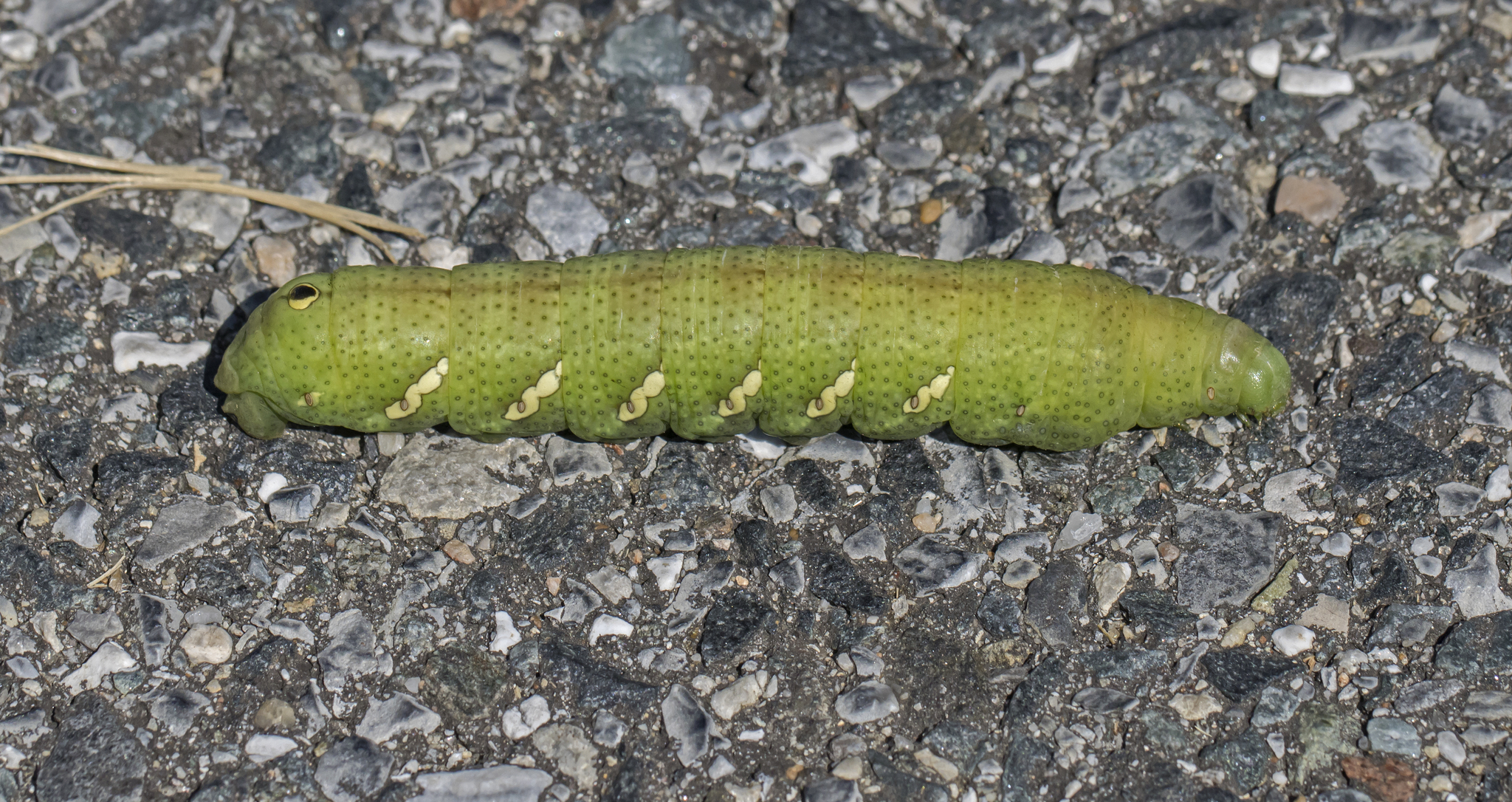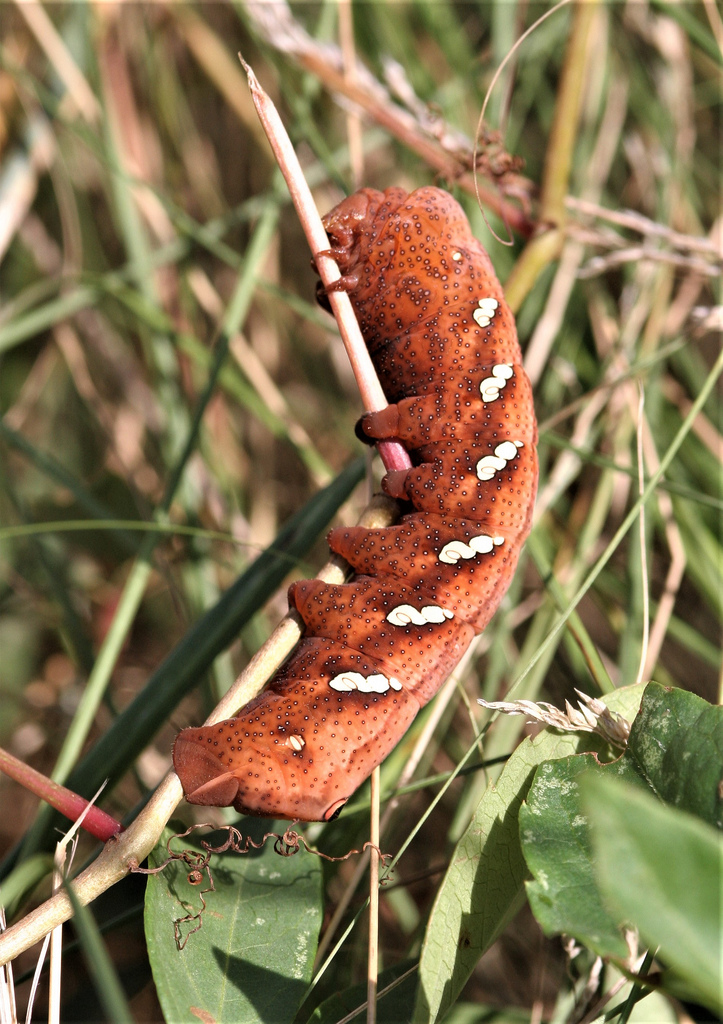Map Snapshot



















57 Records
Seasonality Snapshot
Source: Wikipedia
| Achemon sphinx | |
|---|---|

| |
| Scientific classification | |
| Domain: | Eukaryota |
| Kingdom: | Animalia |
| Phylum: | Arthropoda |
| Class: | Insecta |
| Order: | Lepidoptera |
| Family: | Sphingidae |
| Genus: | Eumorpha |
| Species: | E. achemon
|
| Binomial name | |
| Eumorpha achemon | |
| Synonyms | |
| |
Eumorpha achemon, the Achemon sphinx, is a moth of the family Sphingidae. The species was first described by Dru Drury in 1773.
Distribution
[edit]It is native to North America, where it is known from most of the United States, southern Canada, and northern Mexico.[2] It is rare or absent in the Pacific Northwest, Great Basin, and Southeastern United States except Florida.[3]
Description
[edit]The wingspan is 87–97 mm. It can be distinguished from all other Eumorpha species by the hindwing upperside being almost uniformly pale pink from the base to the diffuse, dark brown submarginal band.
-
Eumorpha achemon ♂
-
Eumorpha achemon ♂ △
Larvae are of three forms: light green, reddish orange, and tan to brown.
Biology
[edit]Adults are on wing from June to August in one generation in the northern part of the range. There are two generations with adults on wing from May to August in the south. Adults feed on the nectar of various flowers, including Lonicera japonica, Petunia × atkinsiana, Philadelphus coronarius, and Phlox species. It is one of five[4] main pollinators of the rare orchid Platanthera praeclara.[3]
They are known to feed on Parthenocissus quinquefolia and Ampelopsis species. They are often found on wild and cultivated Vitaceae, including grapes, and they can sometimes be found in vineyards feeding on the leaves.[3]
References
[edit]- ^ "CATE Creating a Taxonomic eScience - Sphingidae". Cate-sphingidae.org. Archived from the original on 2012-11-12. Retrieved 2011-10-26.
 This article incorporates text from this source, which is in the public domain.
This article incorporates text from this source, which is in the public domain.
- ^ "Eumorpha achemon". Sphingidae of the Americas. Archived from the original on 2015-05-12. Retrieved 2011-10-26.
- ^ a b c NatureServe (2024-08-02). "Eumorpha achemon". NatureServe Explorer 2.0. Arlington, Virginia. Retrieved 2024-09-27.
- ^ Fox, Kristina; Vitt, Pati; Anderson, Kirk; Fauske, Gerald; Travers, Steven; Vik, Dean; Harris, Marion O. (2013-11-01). "Pollination of a threatened orchid by an introduced hawk moth species in the tallgrass prairie of North America". Biological Conservation. 167: 316–324. doi:10.1016/j.biocon.2013.08.026. ISSN 0006-3207.
External links
[edit]- Lotts, Kelly & Naberhaus, Thomas (2017). "Achemon sphinx Eumorpha achemon (Drury, 1773)". Butterflies and Moths of North America. Retrieved December 10, 2018.
- "Moth Caterpillars Feeding on Virginia Creeper (Parthenocissus quinquefolia)". Illinois Wildflowers. Archived January 9, 2009.








.jpg)











